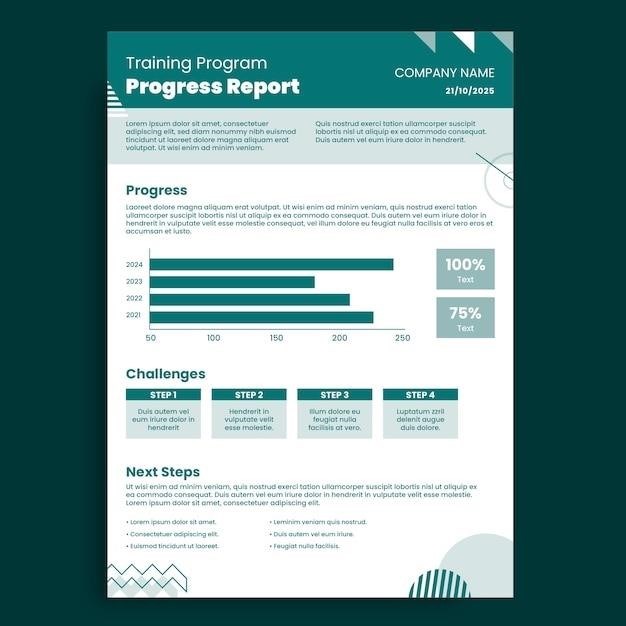
Understanding the COPM Assessment PDF
The Canadian Occupational Performance Measure (COPM) PDF is a client-centered assessment tool used by occupational therapists. It helps identify self-perceived occupational performance problems in self-care, productivity, and leisure. The COPM uses a semi-structured interview format for effective data collection.
What is the Canadian Occupational Performance Measure (COPM)?
The Canadian Occupational Performance Measure (COPM) is a widely used assessment tool in occupational therapy. It’s designed to be an individualized, client-centered measure that captures a person’s self-perception of their occupational performance over time. The COPM focuses on identifying problems the client experiences in their daily activities across three domains⁚ self-care, productivity, and leisure. This assessment is particularly valuable because it directly incorporates the client’s perspective, making it a crucial tool for goal setting and treatment planning. The COPM’s strength lies in its ability to track changes in performance and satisfaction over the course of intervention, allowing therapists to monitor progress and adjust treatment accordingly. This iterative approach ensures that therapy remains relevant and effective in addressing the individual’s specific needs and priorities.
COPM⁚ A Client-Centered Approach to Assessment
The COPM distinguishes itself through its unwavering commitment to a client-centered approach. Unlike standardized assessments that may not fully capture individual experiences, the COPM prioritizes the client’s perspective. The assessment process begins with an open dialogue, allowing clients to identify their own most pressing occupational performance issues. This collaborative approach ensures that the assessment directly reflects the client’s priorities and concerns, fostering a sense of ownership and engagement in the therapeutic process. By focusing on what truly matters to the client, the COPM facilitates goal setting that is meaningful and motivating, enhancing the likelihood of successful intervention. The client’s active participation throughout the assessment and treatment process is central to the COPM’s philosophy, promoting autonomy and self-determination in their rehabilitation journey.
The COPM Interview Process⁚ A Semi-Structured Approach
The COPM utilizes a semi-structured interview, balancing standardized elements with flexibility to accommodate individual client needs. This approach ensures a consistent framework while allowing for personalized conversations. The therapist guides the client through identifying problems in self-care, productivity, and leisure, using open-ended questions to explore the client’s experiences in depth. The semi-structured nature enables the therapist to delve deeper into specific areas, adapting the interview based on the client’s responses and unique circumstances. This dynamic interaction fosters a collaborative relationship, encouraging client participation and ensuring the assessment accurately reflects their lived reality. The therapist’s expertise in occupational therapy informs the conversation, ensuring relevant issues are addressed while maintaining the client’s perspective as the central focus. This balance between structure and flexibility is what makes the COPM interview process both efficient and insightful;
Accessing and Utilizing the COPM PDF
The COPM assessment is available in both digital PDF and paper formats, purchasable directly from authorized vendors. Ensure you obtain the appropriate language version for your client.
Purchasing the COPM Manual and Measure
Acquiring the Canadian Occupational Performance Measure (COPM) involves purchasing both the manual and the assessment forms. The manual provides comprehensive instructions on administering, scoring, and interpreting the COPM. It’s crucial to purchase from authorized distributors to ensure you receive the genuine, updated version. Prices vary depending on the format (digital PDF or printed) and whether you need additional scoring sheets. Digital versions offer convenience and accessibility, while printed versions provide a tangible format for some practitioners. Consider your budget and preferred method of record-keeping when making your purchase. The manual is essential for understanding the theoretical underpinnings of the COPM and for proper administration, ensuring accurate and reliable results. Remember to verify the edition to ensure you have the most current version available. Contacting the official COPM distributors directly is often the best way to guarantee authenticity and access to any necessary support materials.
Availability of COPM in Different Languages
While the provided text mentions the availability of the COPM in English and French, the extent of its translation into other languages requires further investigation. The availability of translated versions is crucial for ensuring cultural sensitivity and accessibility for diverse populations. Accessing the COPM in a client’s native language is essential for accurate assessment and meaningful engagement. Variations in language can influence understanding of questions and the subsequent responses, potentially affecting the validity of the results. Therefore, confirming the availability of the COPM in the required language before purchase is highly recommended. To find translated versions, contacting the official publishers or distributors is advised. They can provide information on translated materials and any associated licensing agreements. Using an untrusted translation could compromise the assessment’s reliability and validity, potentially leading to inaccurate interpretations.
Digital vs. Paper Format⁚ Choosing the Right COPM PDF
The choice between a digital PDF and a paper format for the COPM assessment depends on several factors. Digital versions offer convenience, portability, and easy storage, allowing for quick access and potential integration with electronic health records. However, considerations like internet access and technological proficiency are crucial. Some clients might find paper versions easier to understand and use, especially those less familiar with technology. Paper formats provide a tangible and familiar experience, potentially reducing anxiety or confusion. The digital version offers features like automatic calculations and data management, which can save time and improve efficiency. The paper format, however, might be preferred for maintaining client confidentiality in situations where digital security is a concern. Ultimately, the best format depends on individual client needs, therapist preferences, and the specific context of the assessment.

Interpreting COPM Assessment Results
Analyzing COPM data involves examining performance and satisfaction scores for each identified problem area. Changes in these scores over time indicate progress or lack thereof in occupational performance.
Scoring the COPM Assessment⁚ A Step-by-Step Guide
The COPM scoring process is straightforward yet crucial for accurate interpretation. First, the therapist and client collaboratively identify five problem areas within self-care, productivity, and leisure. For each problem, the client rates their current performance and satisfaction levels on a 10-point scale (1=poor, 10=excellent). The therapist records these scores on the designated forms. Performance scores reflect the client’s perceived ability to perform the activity, while satisfaction scores gauge their contentment with their performance. These scores are then used to calculate average performance and satisfaction scores across all five problems. Remember, accurate scoring requires careful attention to detail and a clear understanding of the client’s perspective. The scoring process is a critical step in determining the effectiveness of interventions and measuring client progress over time. Accurate recording of both performance and satisfaction scores is essential for a comprehensive understanding of the client’s overall occupational performance.
Analyzing Performance and Satisfaction Scores
Analyzing COPM performance and satisfaction scores involves a nuanced understanding of the client’s self-perception of their occupational performance. High performance scores indicate a perceived ability to perform activities effectively, while low scores suggest difficulty. High satisfaction scores reflect contentment with performance, regardless of the actual performance level. Conversely, low satisfaction scores indicate dissatisfaction, even with high performance. Discrepancies between performance and satisfaction scores offer valuable insights. For example, a high performance score coupled with a low satisfaction score may indicate a need to address underlying emotional or contextual factors impacting the client’s experience. Conversely, a low performance score accompanied by high satisfaction suggests the client is adapting well despite limitations. Analyzing these scores provides a holistic understanding of the client’s occupational experience and informs goal setting and intervention strategies. The interplay between performance and satisfaction provides a richer, more comprehensive picture than either score alone.
Understanding Change Scores Over Time
Tracking change scores over time using the COPM is crucial for monitoring progress and evaluating the effectiveness of interventions. By reassessing clients at intervals determined by their needs and treatment plan, therapists can quantify improvements or deteriorations in both performance and satisfaction. Positive change scores indicate improvement, showing increased ability and satisfaction in performing chosen occupations. Conversely, negative change scores suggest a decline in performance or satisfaction, highlighting areas needing further attention. Analyzing trends in change scores helps determine whether interventions are effective and if adjustments are necessary. Consider factors such as the client’s individual context, motivation, and other life events that may influence change scores. Clinicians must interpret change scores within this broader context to gain a more complete understanding of client progress. The COPM’s focus on client-reported change makes it highly sensitive to individual experiences and their perceptions of improvement.

Limitations and Considerations of the COPM
The COPM relies on self-report, potentially limiting accuracy with clients having impaired self-awareness or cognitive deficits. Careful consideration of these limitations is vital for accurate interpretation of results.
Limitations of Self-Reported Assessments
The Canadian Occupational Performance Measure (COPM), while a valuable tool, relies heavily on self-reported data. This inherent reliance introduces several limitations. Individuals with cognitive impairments, such as memory deficits or difficulty with abstract thought, may struggle to accurately assess their own performance or satisfaction. Similarly, clients experiencing significant emotional distress or depression might provide biased or unreliable responses, under- or overestimating their capabilities. The subjective nature of self-report also opens the door to inconsistencies between the client’s perception of their performance and objective observations made by the therapist. Furthermore, cultural factors and differences in communication styles can influence the accuracy and interpretation of self-reported data. Therefore, it’s crucial to supplement COPM results with objective observations and other assessment methods to obtain a more comprehensive understanding of the client’s occupational performance.